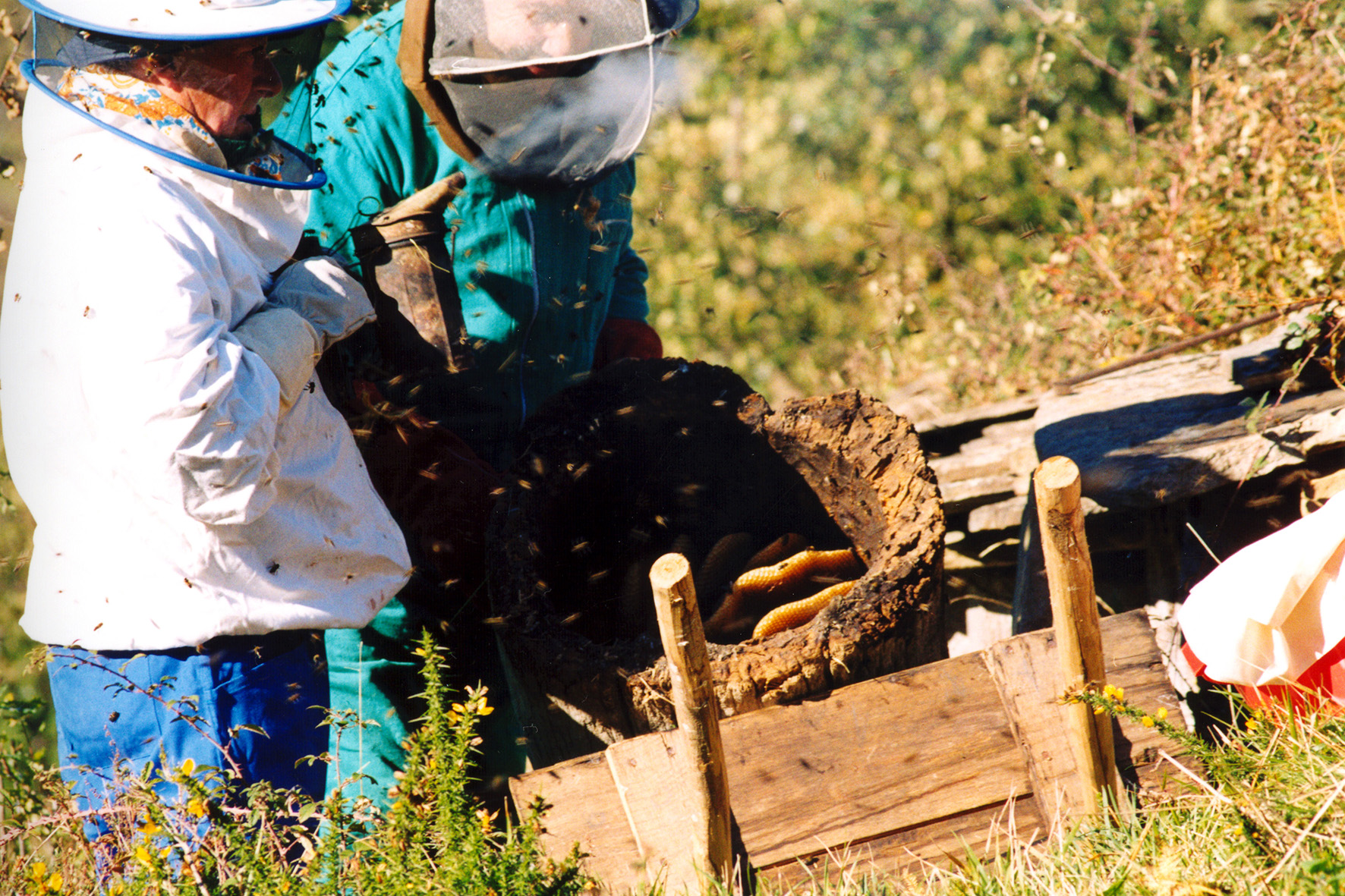Basque ethnography at a glance

St John of Gaztelugatxe. Bermeo (Bizkaia), 1994. José Ignacio García Muñoz. Labayru Fundazioa Photographic Archive.
This maritime sanctuary dedicated to the martyrdom of Saint John the Baptist has over the centuries been one of the most important pilgrimage destinations on the coast of Bizkaia. Pilgrims flocked here to pray, make a wish, promise, express their gratitude…, but also in search of unparalleled aesthetic and landscape experiences. The chapel and an old hermit’s house stand on the island, connected to mainland by a two-arched bridge. 232 stone steps along a narrow path lead to the hermitage, although tradition has it that there once were as many as there are days in a year. The quite inaccessible islet of Aketxe lies close. (more…)

Grazing flock of sheep and lambs. Akaitze Kamiruaga. Labayru Fundazioa Photographic Archive.
The provision of in-kind aid to neighbours was commonly known as lorra in some Basque-speaking communities. It more properly concerned situations where a family in need, for whatever reason, was helped by neighbours, providing them with material support. The terms totoa and totoarena have likewise been found to designate the same concept.
If a shepherd lost his entire flock to disease, he would ask each of his fellow shepherds for a young sheep, which they would immediately present him with. In the surroundings of Oiz Mountain the provision of sheep was known as bildots-lorra, bildots being Basque for ‘yearling sheep’. The custom was also observed in other regions, although not given a particular name. (more…)

Beekeepers in Carranza (Bizkaia), 2003. Miguel Sabino Díaz.
Folks have kept bees in pretty much all inland locations of our country, be it out of curiosity or by tradition. Joxe Mari Gabaro, native of Markina (Bizkaia) and named after the house where he was born, owned several beehives to harvest honey from them. His fellow citizens would have referred to him as an erle-maisua, a similar compound to ontzi-maisua ‘quartermaster’, formed from erle ‘bee, beehive’ and maisu ‘master’, literally meaning ‘bee-master’. (more…)


